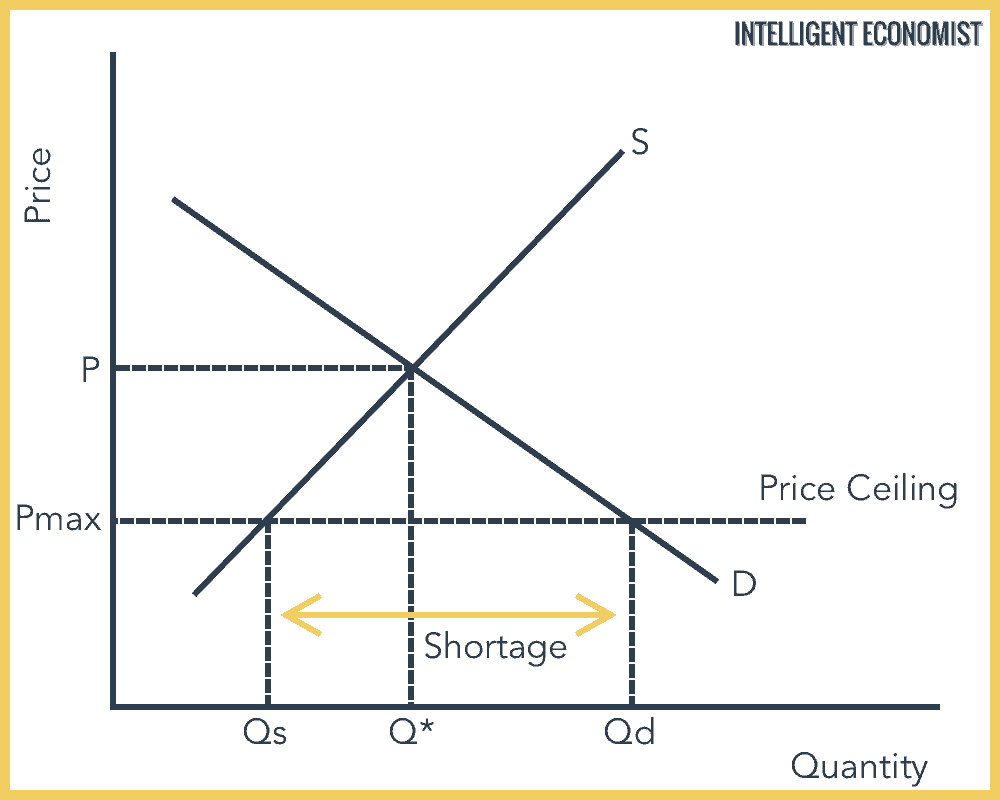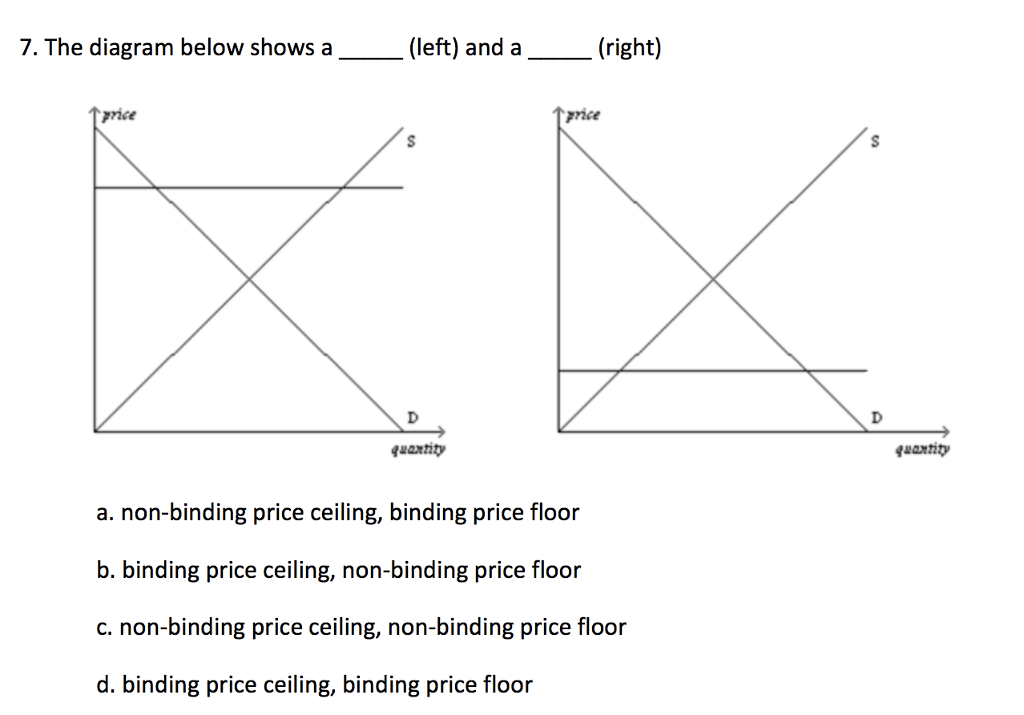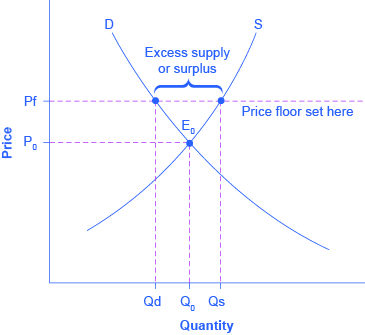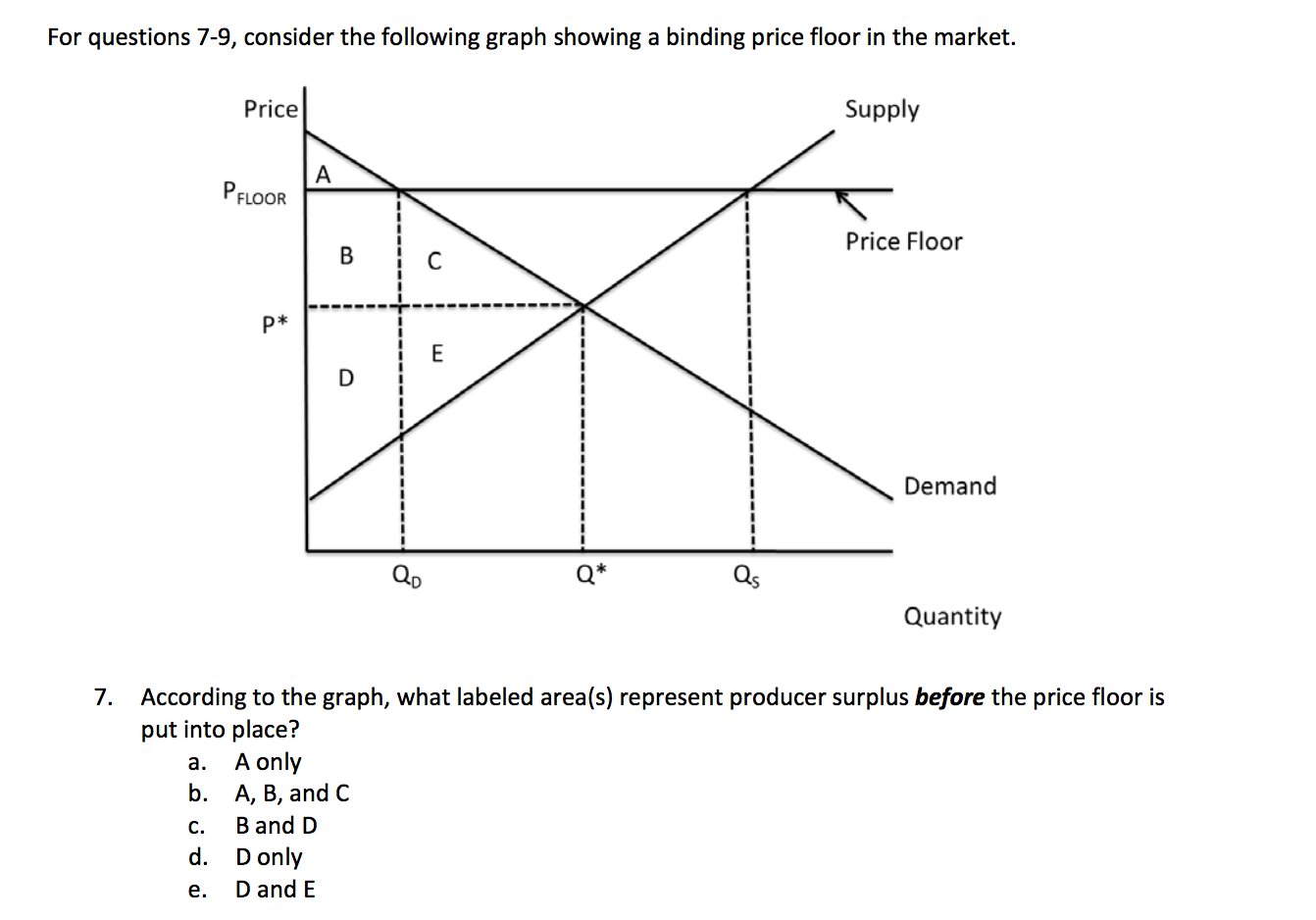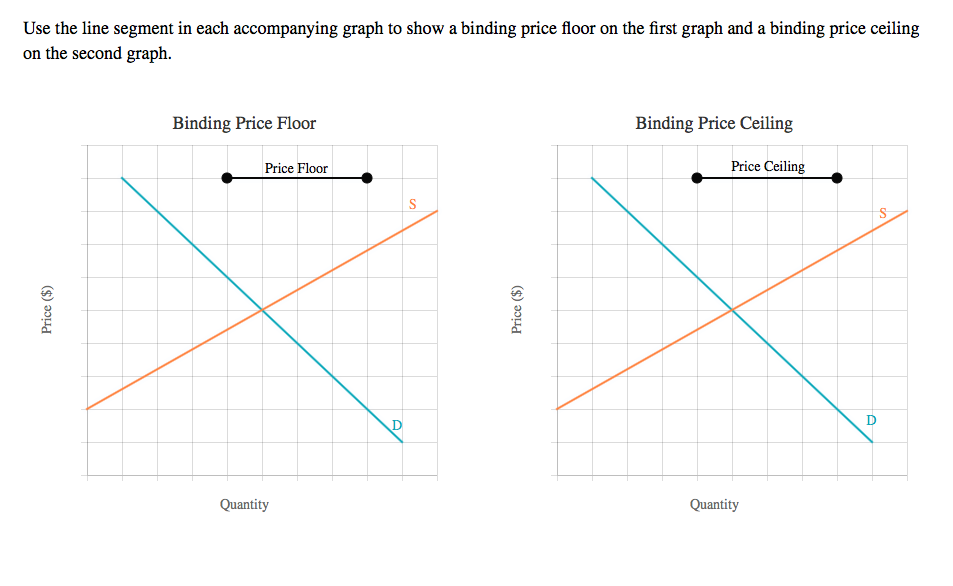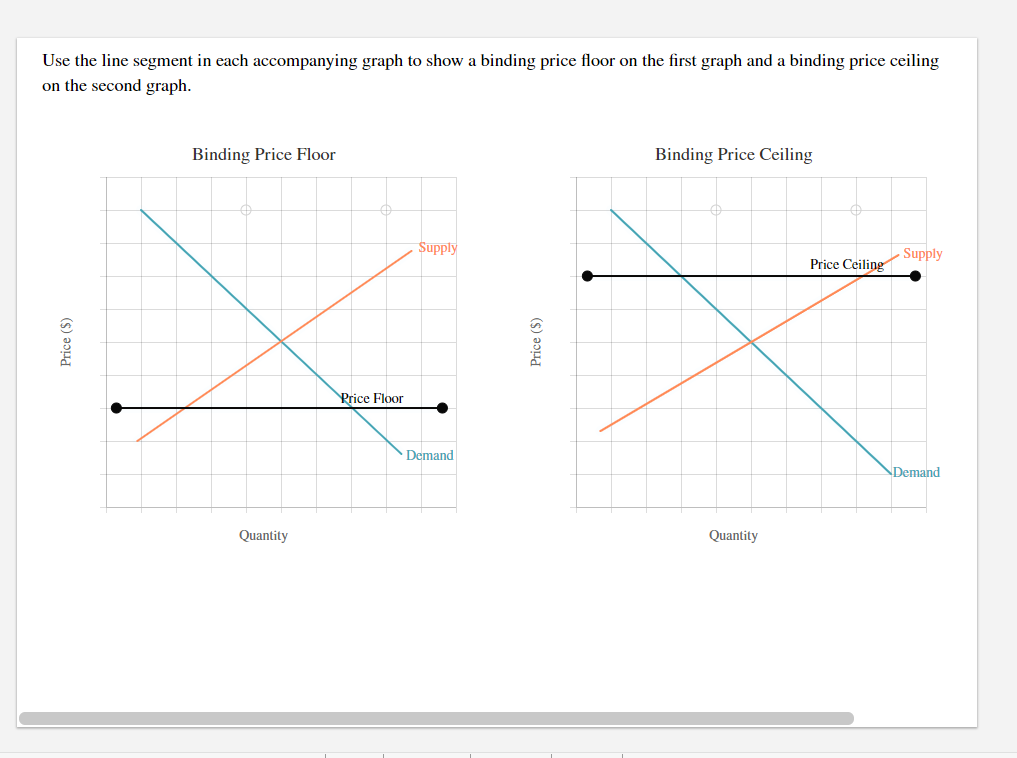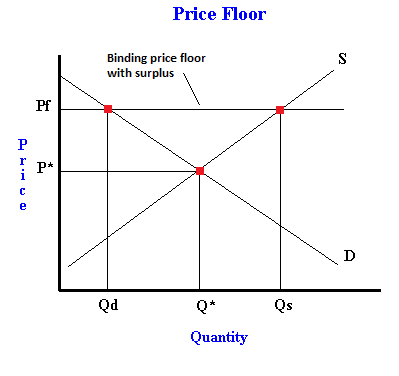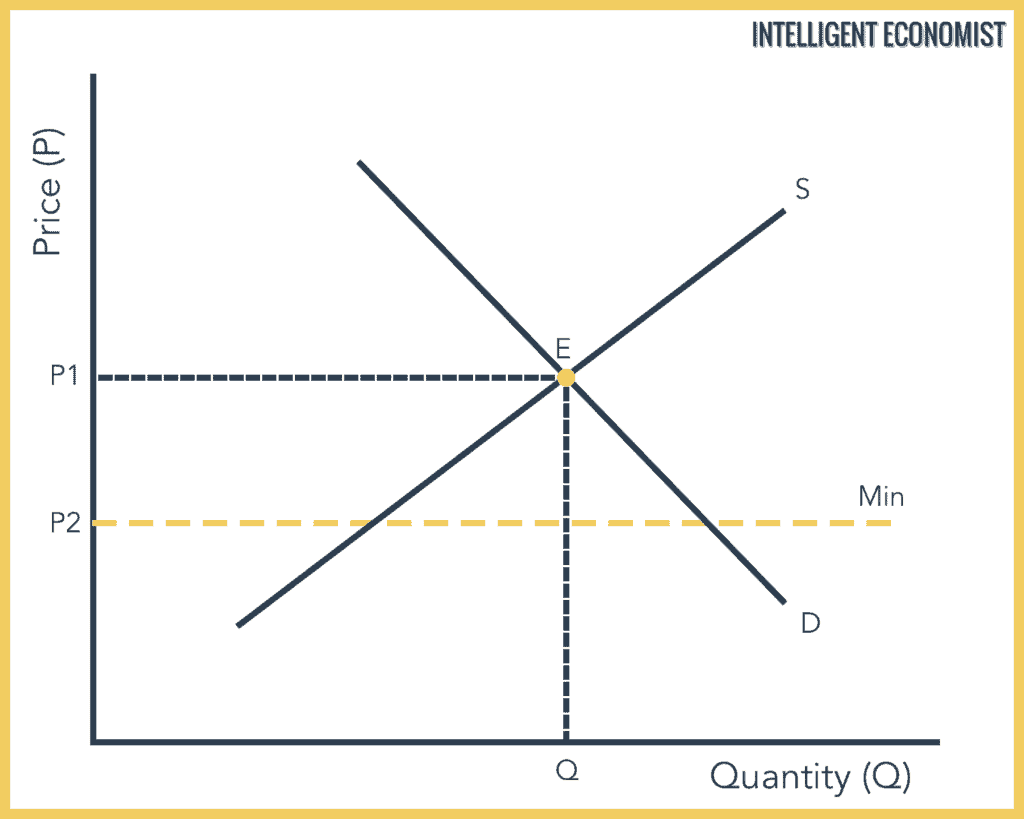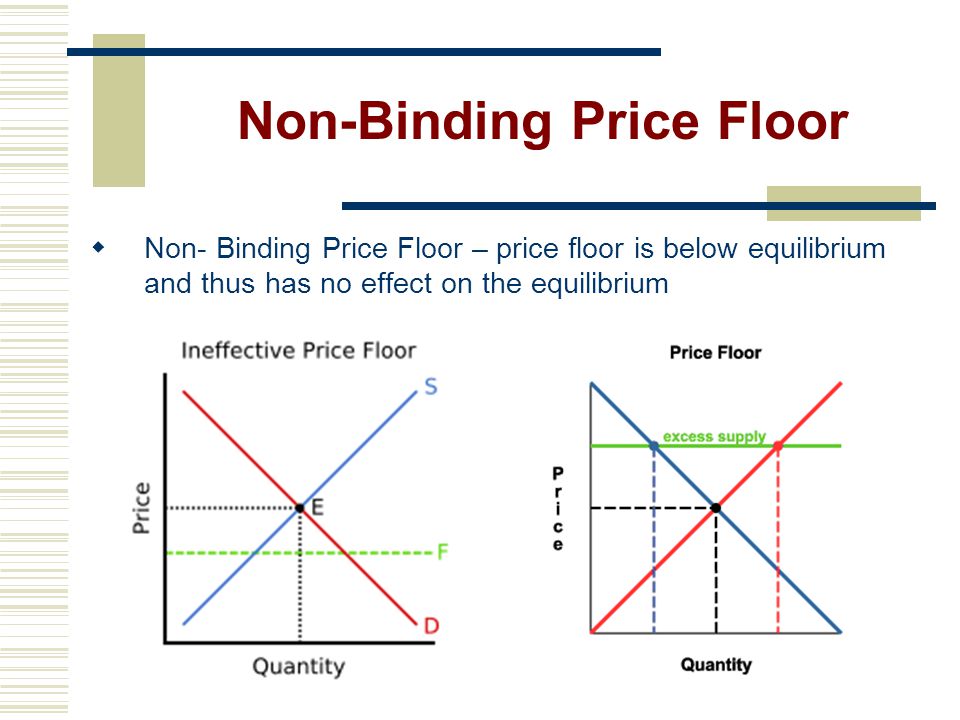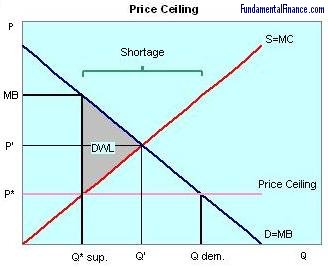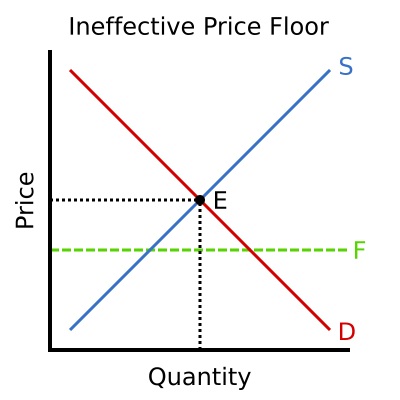Binding Economics Price Floor

Consider the example of a price ceiling for apartments in new york.
Binding economics price floor. This has the effect of binding that good s market. If the equilibrium price is 2 000 per month and the government sets a price ceiling of 3 000 per month is anything going to happen. A price floor is the lowest price that one can legally charge for some good or service. Like price ceiling price floor is also a measure of price control imposed by the government.
A price floor is the lowest legal price a commodity can be sold at. In other words a price floor below equilibrium will not be binding and will have no effect. The most common price floor is the minimum wage the minimum price that can be payed for labor. Economics classes want students to be able to recognize the difference between binding and non binding price ceilings.
Perhaps the best known example of a price floor is the minimum wage which is based on the view that someone working full time should be able to afford a basic standard of living. If the price floor is under the equilibrium price economic effects of rent control and minimum wage short run long run per unit tax on buyers sellers and market outcome. Governments usually set up a price floor in order to ensure that the market price of a commodity does not fall below a level that would threaten the financial existence of producers of the commodity. The trick is to remember that prices are free to operate above a price floor just like standing on a floor so any market price above the price floor will not be affected in any way.
A price floor is an established lower boundary on the price of a commodity in the market. The equilibrium price commonly called the market price is the price where economic forces such as supply and demand are balanced and in the absence of external. But this is a control or limit on how low a price can be charged for any commodity. Economics classes want students to be able to recognize the difference between binding and non binding price floors.
A price floor must be higher than the equilibrium price in order to be effective. A price floor is a government or group imposed price control or limit on how low a price can be charged for a product good commodity or service. Types of price floors. A binding price floor is a required price that is set above the equilibrium price.
The government is inflating the price of the good for which they ve set a binding price floor which will cause at least some consumers to avoid paying that price. Graphical representation of tax on buyers and tax on sellers. A price ceiling is a legal maximum price but a price floor is a legal minimum price and consequently it would leave room for the price to rise to its equilibrium level.



